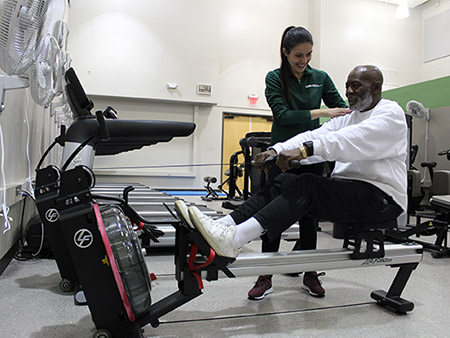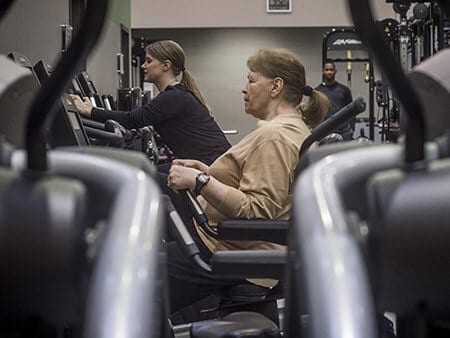What happens at the molecular level after exercise? Scientists, physicians and clinical exercise specialists from across the country are embarking on a landmark National Institutes of Health effort to find out.
The Center for Exercise Medicine at the University of Alabama at Birmingham is one of 11 clinical sites nationwide participating in the study.
The goal of the Molecular Transducers of Physical Activity Consortium, known as MoTrPAC, is to create a comprehensive map of the molecular responses to exercise and its relation to health.
“Decades of scientific research have demonstrated numerous important health benefits of exercise, but the underlying mechanisms at the molecular level are largely unknown — which is why MoTrPAC is a very exciting and important discovery project,” said Marcas Bamman, Ph.D., professor in the UAB Department of Cell, Developmental and Integrative Biology in the School of Medicine and director of the UAB Center for Exercise Medicine.
Scientists worldwide will be able to use the MoTrPAC molecular maps to generate hypotheses for future investigations of exercise-induced health benefits. Ultimately the rich data sets may also improve the ability of specialists to prescribe exercise programs precisely tailored to each individual.
“We will undoubtedly find individual differences,” said Francis Collins, M.D., Ph.D., director of the National Institutes of Health. “What works for me might be very different than what works for someone else. We want to discover that.”
The study, funded by a $240 million program through the NIH Common Fund, will enroll 1,980 adults across 10 clinical sites and 300 children at one site. Along with UAB, sites include: Ball State University, Muncie, Indiana; Duke University, Durham, North Carolina; East Carolina University, Greenville, North Carolina; AdventHealth, Orlando, Florida; the University of California, Irvine; the University of Pittsburgh; the University of Colorado, Denver; University of Texas Medical Branch at Galveston; Pennington Biomedical Research Center at Baton Rouge; and University of Texas Health Science Center at San Antonio.
Most of the study participants will be people who do not exercise regularly. They will be divided into three groups: 840 who will do endurance exercise; 840 who will do resistance exercise; and 300 who will not do either. Participants in both exercise groups will receive personal coaching.
The exercise groups will go through three 1-hour training sessions per week for about 12 weeks.
There will also be a comparison group consisting of 300 people considered highly active or trained, meaning they have been consistently sticking to endurance training or resistance training for the past year or longer.
Scientists will assess participants’ cardiorespiratory function, muscular strength and body composition. Researchers will also collect blood, muscle and fat samples, monitor participants’ free-living physical-activity level using wearable devices, and complete participant-reported outcomes and health status by interviews and questionnaires.
UAB is leading a 3-site MoTrPAC clinical center called the Exercise and Physical Activity Collaborative Team with AdventHealth and Ball State University.
“The Human Performance Laboratory at Ball State University is honored to partner with UAB and the Translational Research Institute at AdventHealth on this exciting opportunity to better understand the molecular underpinnings that drive exercise adaptations and lead to numerous health benefits,” said laboratory director Scott Trappe, Ph.D..
For more information on participating in MoTrPAC, contact is Kristie Williams, clinical trials manager, UAB Center for Exercise Medicine, 205-996-0855 or [email protected], or go to https://www.motrpac.org/join.


